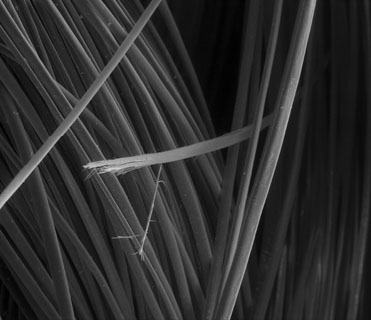Cornelia Parker is best known for creating what might be described as a form of atomised sculpture. In 1991 she created an installation entitled Cold Dark Matter: An Exploded View, which consisted of the gathered fragments of a shed, exploded by the British Army School of Ammunition, suspended in mid air around a lightbulb. In 1999, she made a piece called Edge of England, formed from myriad pieces of fallen chalk gathered from the beaches below the Seven Sisters, hung in the air on wires to form a rectangular field of sparkling white detritus – a sculptor’s fragmentiad, as well as a piercingly concise image of the English landscape in flux.
There may have been those who doubted the wisdom of Andrew McCarthy, Deputy Director of the Bronte Museum in Haworth, West Yorkshire, when he invited Parker to create a series of new works inspired by the relics of one of England’s most famous literary families. What on earth might she get up to? Shred a precious manuscript, set fire to Branwell Bronte’s bed, maybe even blow up the whole museum? In the event, Parker has taken a softly softly approach to the commission. Working in collaboration with forensic experts on the West Yorkshire police force, and with the Department of Archaeological Sciences at the University of Bradford, she has used an electron microscope to scan various objects from the voluminous holdings of memorabilia stored at the museum.
The result is a series of framed photographs, modest in scale, that show high-magnification images of things once used or owned by the Bronte family: locks of the sisters’ hair; the quill pen that Emily Bronte used, perhaps, to write Wuthering heights; a needle; Charlotte Bronte’s handkerchief, marked with flecks of blood – coughed up, according to local legend, during...

Cornelia Parker at The Bronte Museum
01-10-2006

